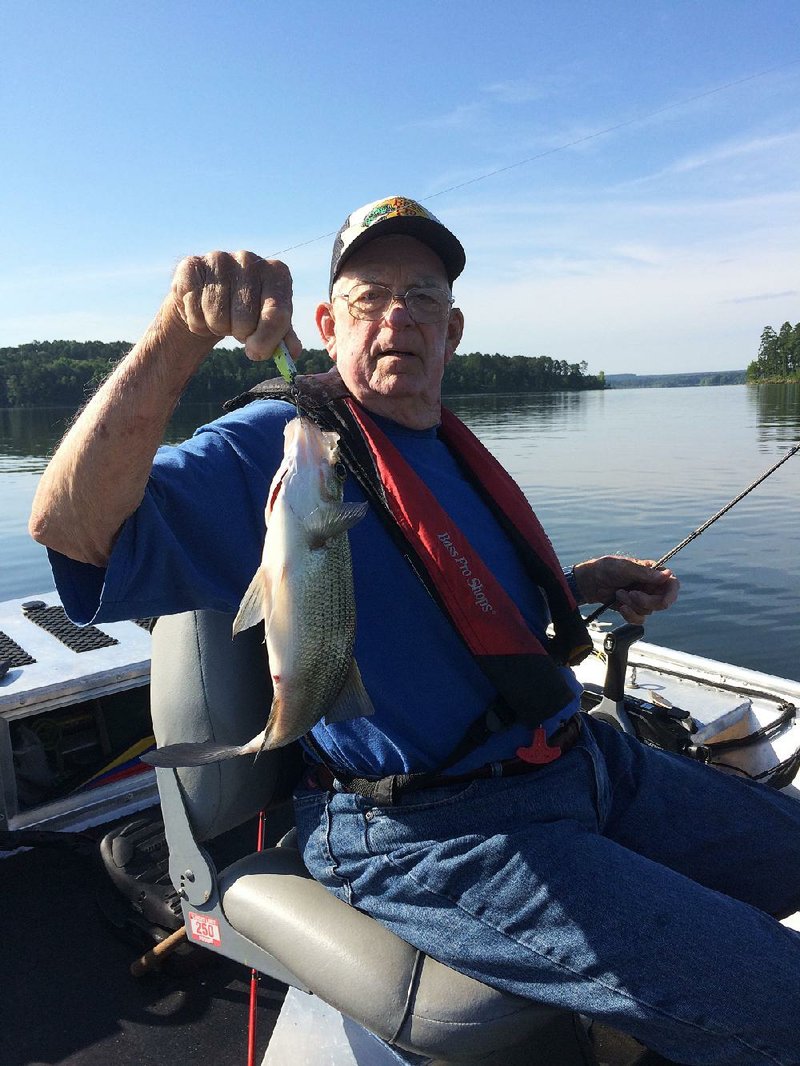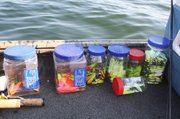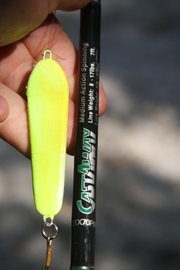DeGRAY LAKE -- I love watching a lake come alive in the morning.
It starts when the dawn curtain rises over a pale blue sky that glows aflame in the stage light of a rising sun.
Like commuters driving to work, birds fly to their job stations with a singularity of purpose that does not allow for texting with one wing and slugging down coffee with the other.
"Look over there at that great blue heron," said J.O. Brooks as we pulled into a currently productive hybrid hole. "He fishes for a living, and he'll never lie to you."
Brooks, of Little Rock, was once one of the most formidable names on Lake Maumelle, but in recent years he has migrated to DeGray Lake to fish for hybrid striped bass. He's there everyday chasing what he says is one of the most fun and exciting fish in Arkansas to catch. He keeps his daily limit, which he fillets and serves to people recovering from drug and alcohol addiction at a local recovery facility.
"He's been doing that for years. He lives for it," said Rusty Pruitt of Bryant, a longtime friend of Brooks.
Pruitt, Brooks and I convened Tuesday for an early morning hybrid raid at DeGray Lake, one of our state's best hybrid fisheries, though not as good as it once was, Brooks said. The Arkansas Game and Fish Commission stocks fewer hybrids in DeGray and other lakes as a compromise solution to what largemouth bass anglers insist is an overtaxed forage base.
Nevertheless, Brooks said he's been catching monster hybrids lately, starting around 8 pounds. He recommended using at least 20-pound test line.
Even without a fish on the other end, you need heavy line to use Brooks's 2-ounce, hand-poured spoons. Sam Richardson, Brooks's favorite fishing companion, uses the same spoon to great effect, and he taught me the technique during a short discipleship several years ago.
With a heavy-action rod and a suitably-spooled reel, launch the spoon as far as you can. The stress can be tough on inferior tackle.
My standard rig for this kind of fishing is also what I use for redfish and snook on the Gulf Coast. It consists of a 7-foot medium-heavy Falcon Lowrider spinning rod with a Wavespin DH5000 reel spooled with 30-pound test (8-pound test diameter) Spider Wire Ultracast Flouro Braid with a 17-pound Berkley Vanish flourocarbon leader. I joined leader to backing with a double-uni knot, an extraordinarily strong, easily tied knot.
The water was glass calm when Brooks stopped his motor.
"They usually start coming up right about now," Brooks said as he triangulated three terrestrial points to position his boat.
Shortly after, the surface began to boil as fish chased threadfin shad to the surface.
As I catapulted the rod forward, the tip bent under the load of the massive spoon. I hurled my shoulders forward and sent the spoon into the stratosphere. Way out in the distance, it hit the water with a slurping sound followed by a big splash.
"Mr. Hendricks, I do believe you've done this before," Brooks said approvingly.
Brooks used a baitcasting rig that screamed like a siren under the strain.
When the spoon hits the water, you haul back your rod to let out an amount of slack line. This allows the spoon to fall vertically instead of arcing back toward you on tight line. Let it hit the bottom and then start reeling. Hybrids often follow a spoon to the bottom, and then strike it on the ascent.
"Sometimes they hit it on the drop, too," Brooks said.
Strikes on the drop are hard to detect because the line is slack, which dampens vibrations.
Hybrids were late to the party that morning, but we did catch a mess of magnum white bass that were as big as any I've seen. Brooks also caught a big largemouth.
"I don't know what it is about these big spoons, but fish like them," Brooks said.
He told a story about fishing on Greers Ferry Lake on a day when hybrids were active but were unwilling to strike. Brooks finally tied on one of those big spoons and wore out the hybrids amid a flotilla of anglers that couldn't buy a bite.
"I went around and passed out spoons to the other fishermen around me," Brooks said.
There's no mistaking a hybrid strike. They don't mess around. They slam the bait and run. Sweep the rod forward and reel quickly. A hybrid will hook itself.
White bass, with their smaller mouths, often hit a big spoon several times and yank on the lure, almost the way a bream does with a plastic lizard, except a lot more forcefully.
Like flipping a switch, the fish quit biting at about 7 a.m. We only had two small hybrids a couple of monster white bass in the cooler. That prompted Brooks to take us on milk run of his favorite hybrid haunts. He grew increasingly agitated with each stop because his electronic graph showed no sign of fish. Pruitt caught one hybrid over a deep ridge about 40 feet deep, but that was all the action we had for about two hours.
With the sun beating down and glaring, and without a hint of breeze, sweat poured off our brows with each stop. Brooks was flummoxed.
"Let's call it good," I said. "I think we're spinning our wheels to keep trying."
"Let's go back and try that spot where we started," Brooks said. "If they aren't there, we'll go."
I knew what was going to happen before Brooks started the motor. When you've mentally checked out is when the fish often check in. It follows my Theory of Bad Intentions, which postulates that a hunter sends out predatory vibrations that game animals sense.
Read a book. Take a nap. Surf the web on your phone. Do anything to deactivate your predatory mode. When I pay the least attention is when deer and turkey are most likely to appear. It works that way with fishing, too.
We coasted into our beginning spot, and sure enough, we got strikes on almost every cast.
Maybe it was the Theory of Bad Intentions on display, or maybe it just took that long for the fish to bite.
Sports on 06/10/2018



